





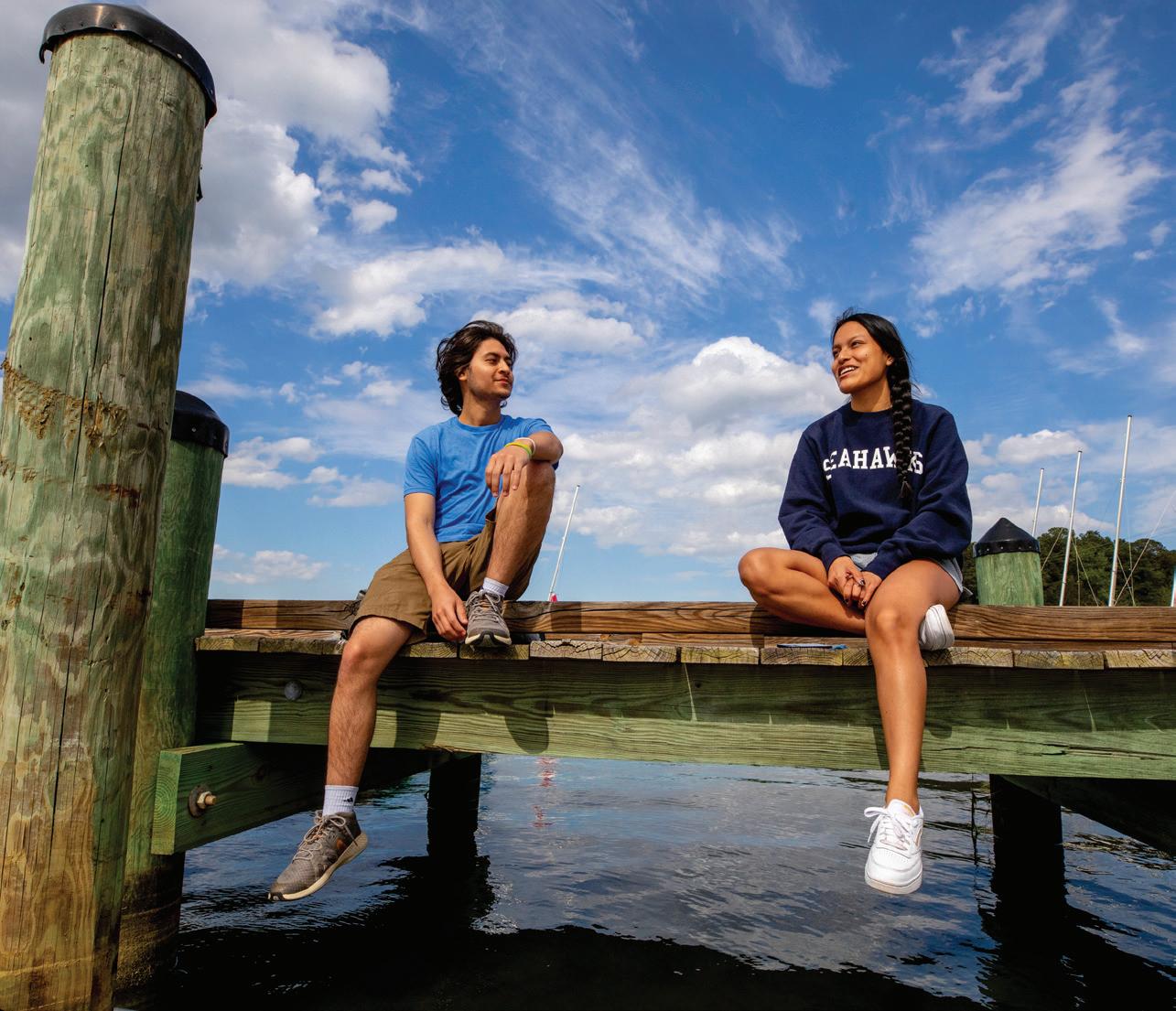








Letter from the President
About St. Mary's College of Maryland
Overview of the College
Mission Vision
Guiding Principles
Core Values
Overview of the Strategic Plan
“The Rising Tide, Charting a Course for the Future of St. Mary’s College of Maryland”
Pillar I: Create an innovative, distinctive and competitive academic identity that attracts and retains talented students, faculty and staff.
Pillar II: Empower all students for success.
Pillar III: Build enrollment through a sustainable, vibrant and diverse student body that exemplifies an inclusive institution.
Pillar IV: Become a sought-after regional resource and develop opportunities for student educational engagement with communities that are mutually beneficial.
“The Rising Tide”: Origins and Process Strategic Plan Steering Committee, Work Groups and Implementation Team
The challenges and opportunities confronting higher education today require us to be forward-thinking and deliberate about what we provide students and how we prepare them to thrive as responsible and thoughtful citizens and leaders.
I am pleased to present the St. Mary’s College of Maryland (SMCM) 2023-2026 Strategic Plan: “The Rising Tide, Charting a Course for the Future of St. Mary’s College of Maryland.” It is an ambitious and comprehensive blueprint focused on our students, faculty, staff and community. “The Rising Tide” solidifies our position as a College of choice for these constituencies and a national leader in liberal arts education.
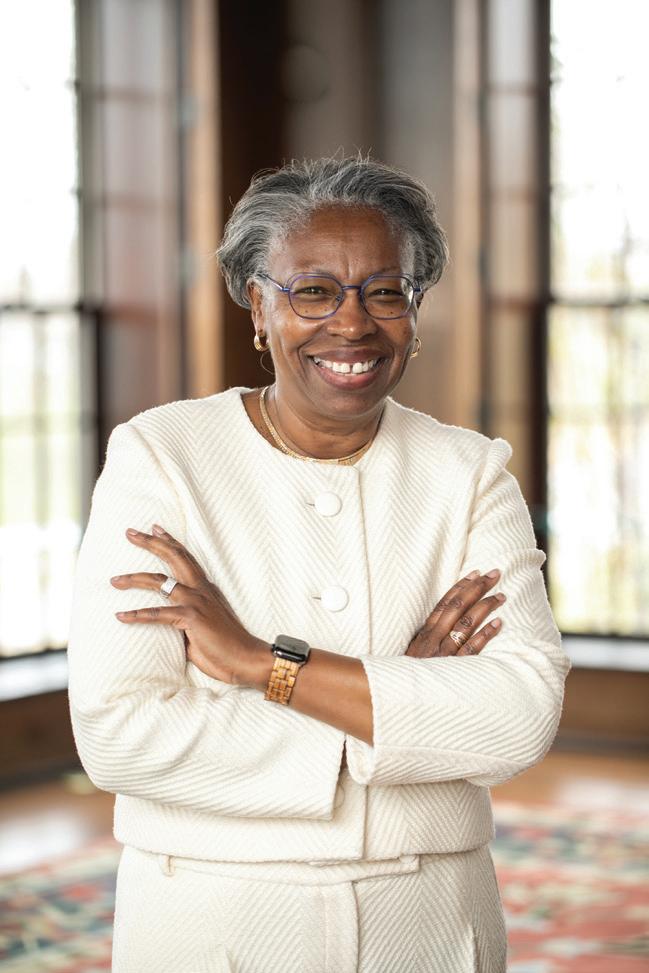
A dedicated steering committee collaborating with faculty, staff, students and the community developed “The Rising Tide” based on four foundational pillars. It builds on two prior plans and manifests our commitment to fostering academic excellence, inclusivity, innovation and community engagement. Moreover, it reflects our ambition to create a college experience that prepares students for their immediate professional aspirations and a lifetime of intellectual curiosity, personal growth and civic responsibility.
SMCM remains firmly committed to its history and future as a public liberal arts college because we know that such an education is a great democratizer and provides students with a foundation in curiosity, critical thinking, communication, problem-solving and adaptability. With a liberal arts education accessible to all who can do the work, regardless of socioeconomic background, we ensure that all individuals can acquire these skills and knowledge, fostering social mobility and creating a more equitable society. Ultimately, liberal arts education empowers individuals to thrive as responsible and thoughtful global citizens and leaders who positively impact the world in which they live, whether in their backyard or in new environments.
As one of two designated public honors colleges and the first of its kind in the nation, our College is recognized for its success in providing an accessible and exceptional liberal arts education. This, as it relates to our mission, provides a path for social mobility for all students who are admitted into our campus community. Our new strategic plan will enable us to continue and improve upon this record of institutional success.
The plan centers on four pillars:
• Create an innovative, distinctive and competitive academic identity that attracts and retains talented students, faculty and staff.
• Empower all students for success.
• Build a sustainable, vibrant and diverse student body that exemplifies an inclusive institution.
• Become a sought-after regional resource and develop opportunities for student educational engagement with communities that are mutually beneficial.
No one pillar stands alone; instead, they are like the sails on a ship, working together to fortify, energize and move SMCM forward.
Among the highlights of what we can expect in the months and years ahead:
• Three to five new academic programs (including potential interdisciplinary and certificate programs) that are relevant, attractive and sustainable
• New international experiences, such as “Globalization-at-home” and a passport initiative, to increase global awareness of countries and cultures beyond North America and Europe
• Development of a Student Success Center for all student support services
• Expansion of our community engagement and opportunities for student involvement in curricular and co-curricular offerings
In this post-pandemic world, we face uncharted waters that present challenges unlike anything we have encountered before, with unprecedented threats to our democracy, climate and fundamental human rights. Our course forward demands our full attention and collective efforts. As an academic institution committed to nurturing engaged citizens, SMCM stands at the helm, ready to empower our students, faculty, staff and community to contribute meaningfully to finding innovative solutions and shaping a better future for all.
Together, we can navigate these new waters, creating a tomorrow that is not only secure but also prosperous and harmonious for all who traverse its depths.
Tuajuanda C. Jordan, PhD President, St. Mary’s College of Maryland
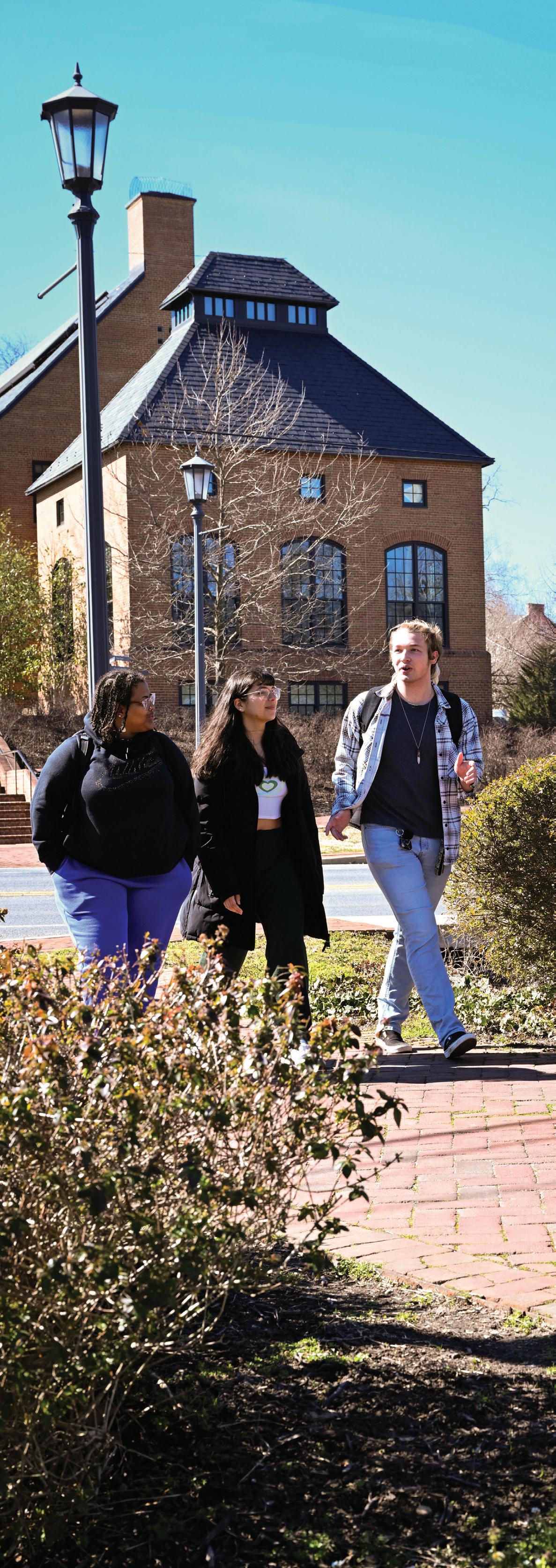
Founded on the site of Maryland’s first capital, the College stands as a living legacy to the ideals of freedom and inclusiveness. Our beautiful residential campus on the banks of St. Mary’s River inspires our work, our play and our commitment to the environment.
St. Mary’s College of Maryland is Maryland’s Honors College, a selective, public liberal arts college—a vibrant community of scholars and learners. We foster a rigorous and innovative curriculum; experiential learning; scholarship and creativity; close mentoring relationships; and a community dedicated to honesty, civility and integrity. We are committed to diversity, access and affordability. Our students, faculty and staff serve local, national and global communities and cultivate and promote social responsibility.
St. Mary’s College of Maryland will increasingly serve as the liberal arts college of choice for intellectually ambitious students, faculty and staff from diverse backgrounds, attracted by a rigorous, innovative and distinctive curriculum that integrates theory and practice; a talented, professionally engaged and student-centered faculty and staff; and a strong infrastructure. Students will be part of a collaborative learning community that embraces intellectual curiosity and innovation, the power of diversity and the College’s unique environment. Our graduates will thrive as responsible and thoughtful global citizens and leaders.
St. Mary’s College of Maryland is deeply committed to the belief that the thoughtful exchange of ideas and viewpoints can only enhance our environment when done in a respectful and civil manner. We also believe that all voices matter and understand that there are different levels of responsibility associated with every voice. To that end, every member who joins our community should embrace and embody the principles that guide our College by pledging the following:
As a member of St. Mary’s College of Maryland, I accept the St. Mary’s Way and agree to join in working with others to develop this College as a community:
• Where people respect the natural environment and the tradition of tolerance which is the heritage of this place
• Where people cultivate a life-long quest for disciplined learning and creativity
• Where people take individual responsibility for their work and actions
• Where people foster relationships based upon mutual respect, honesty, integrity and trust
• Where people are engaged in an ongoing dialogue that values differences and the unique contributions of others’ talents, backgrounds, customs and world views
• Where people are committed to examining and shaping the functional, ethical values of our changing world
• Where people contribute to a spirit of caring and an ethic of service.
By choosing to join this community, I accept the responsibility of helping to build on its past heritage, of living its ideals and contributing to its future.
• Advancement of the College mission and vision
• Student-centered ethos
• Intellectual, creative and scholarly exploration
• Integration of theory and practice
• Innovation and excellence in academic and administrative enterprises
• The power of a diverse community
• Local, national and global engagement
• Social responsibility and civic-mindedness
• Access and affordability
• Civility and respect for self, others and the environment
• Clear and effective communication
• Environmental stewardship
• Careful stewardship of resources
SMCM’s strategic plan, “The Rising Tide,” launched in 2023, draws inspiration from the College’s location along the Tidewater peninsula in Maryland, surrounded by two rivers and the Chesapeake Bay. It also reflects the school’s history of over 180 years as a renowned learning institution while recognizing its role and responsibility as The National Public Honors College.
“The Rising Tide” firmly positions SMCM as the institution of choice for students, faculty and staff. By charting a course that anticipates the challenges and opportunities ahead, the plan demonstrates the College’s commitment to providing an educational experience that offers honors-level curricular and co-curricular programs for all. It builds upon the success of two previous strategic initiatives -- “A Time for Rebirth” in 2016 and “Big Audacious Goals” in 2020. It also recognizes that small colleges must focus on continuing to grow and diversify their enrollment to ensure long-term viability.
Just as a rising tide brings growth and regeneration, this plan offers expanded growth opportunities to create new and valuable experiences for students, faculty and staff and to revitalize and strengthen ties between the College community and the region and state. It champions inclusion, diversity and interdisciplinary exploration, with the goal of creating a diverse and vibrant intellectual environment where the ebb and flow of varied perspectives challenge and inspire the community to embark on an enriching educational voyage.
With this plan, the College moves closer to achieving its aspirations and obligations as The National Public Honors College. The plan emphasizes that attracting, retaining and graduating a diverse student population requires new strategies to support this goal: offering distinctive academic programs that include experiential learning; implementing and enhancing our unique experiential programs; prioritizing student success; and increasing retention and graduation rates, which in turn, contribute to our enrollment and reputation. The plan envisions expanding SMCM’s reach nationally and internationally while strengthening its presence in Maryland. At home, the focus is on positively impacting the region through community engagement and service by providing students with valuable skills and knowledge. SMCM aims to continue its work in establishing itself as a hub for liberal arts education, offering educational opportunities and nurturing active citizens capable of effecting positive change, both locally and globally.
This transformative initiative requires the integration of multiple pillars to ensure a collective impact that leads to enhanced vibrancy and national recognition. By strategically weaving these pillars together, the College paves the way for comprehensive growth, innovation and success.

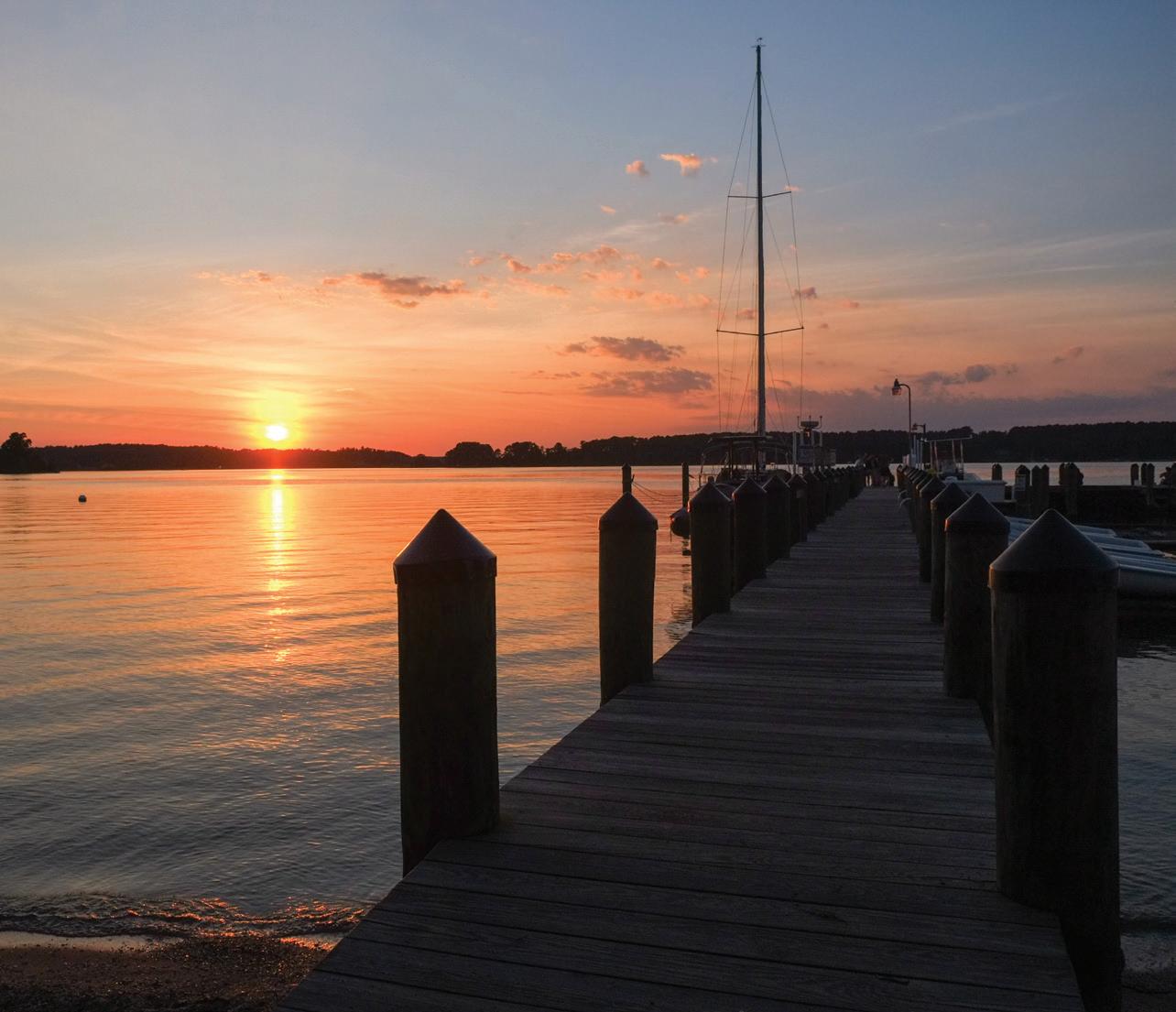





“The Rising Tide” strategic plan is the third in a trilogy since 2016. It builds upon the goals achieved from previous plans to establish and solidify SMCM’s position as The National Public Honors College and the college of choice for students, faculty, staff and the community.
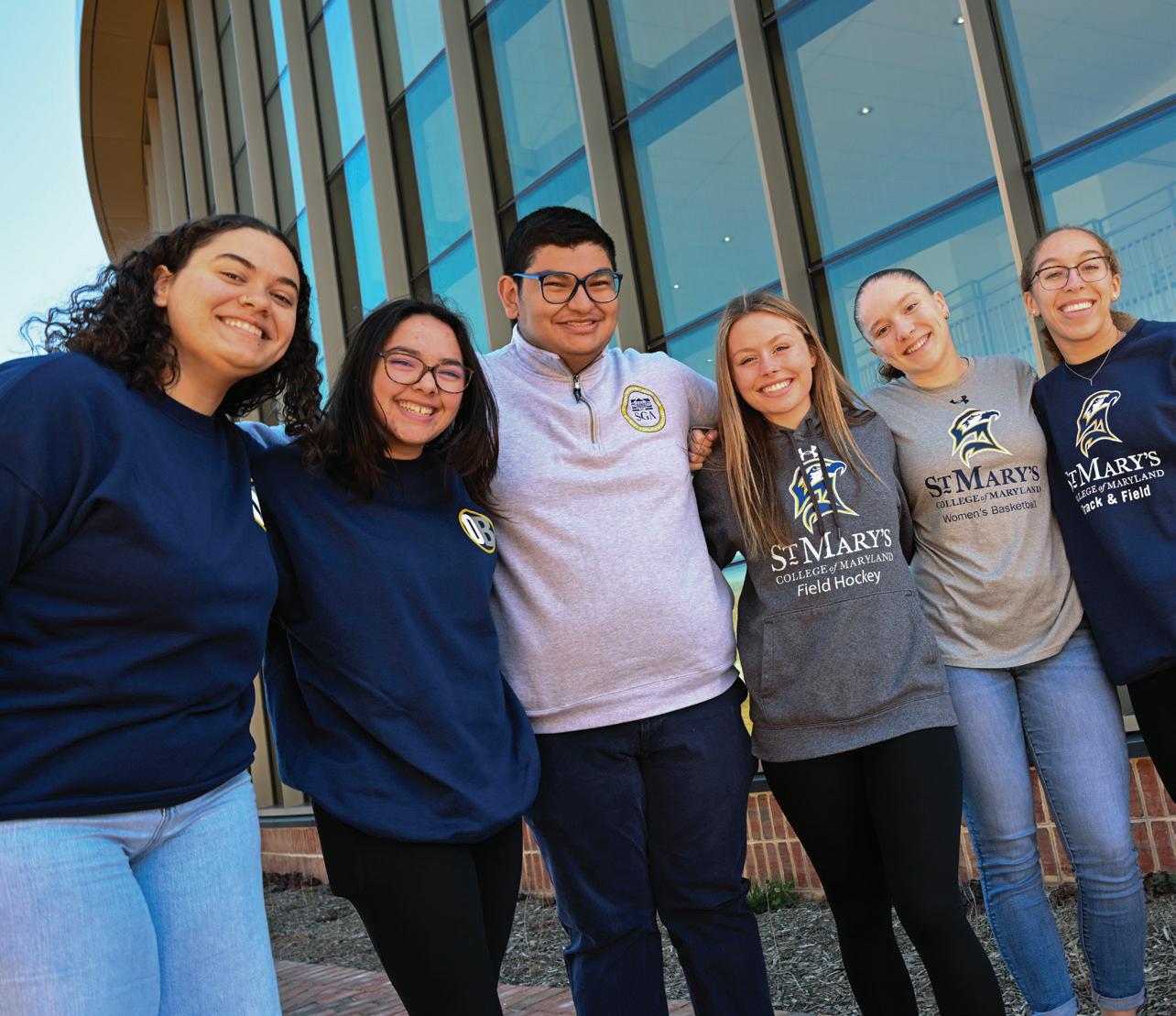
The first plan, “A Time for Rebirth,” focused on strengthening the foundations for sustainable growth. It achieved its core elements of updating and enhancing SMCM’s infrastructure, resources, processes and student recruitment and retention policies.
The second plan, “Big Audacious Goals,” in 2020, was transitional and focused on resetting the College’s academic portfolio and increasing the number of student applications. SMCM developed and implemented initiatives through three task forces amid a pandemic when most institutions abandoned or paused their strategic planning. Despite the challenges during COVID, all partners, including the Board, faculty, staff, students and College leadership, actively engaged in the planning process. Key results of the plan included new neuroscience, business administration and management, performing arts and marine science majors; the addition of track and field as a new varsity sport; a record number of first-time applicants; and a long-range tuition strategy that has held tuition flat since 2020.
Given today’s changing higher education landscape, the “Rising Tide” embodies a more dynamic and flexible planning strategy for SMCM to actualize its place as The National Public Honors College and solidify its reputation as an academic center of excellence that provides an innovative honors curriculum to inspire and engage all students, faculty and staff. By fostering a community that nurtures intellectual curiosity and promotes inclusivity, SMCM’s “Rising Tide” strategic plan aims to develop college graduates who are thoughtful leaders and engaged global citizens.
“The Rising Tide” is built on four essential pillars:

• Pillar I: Create an innovative, distinctive and competitive academic identity that attracts and retains talented students, faculty and staff.
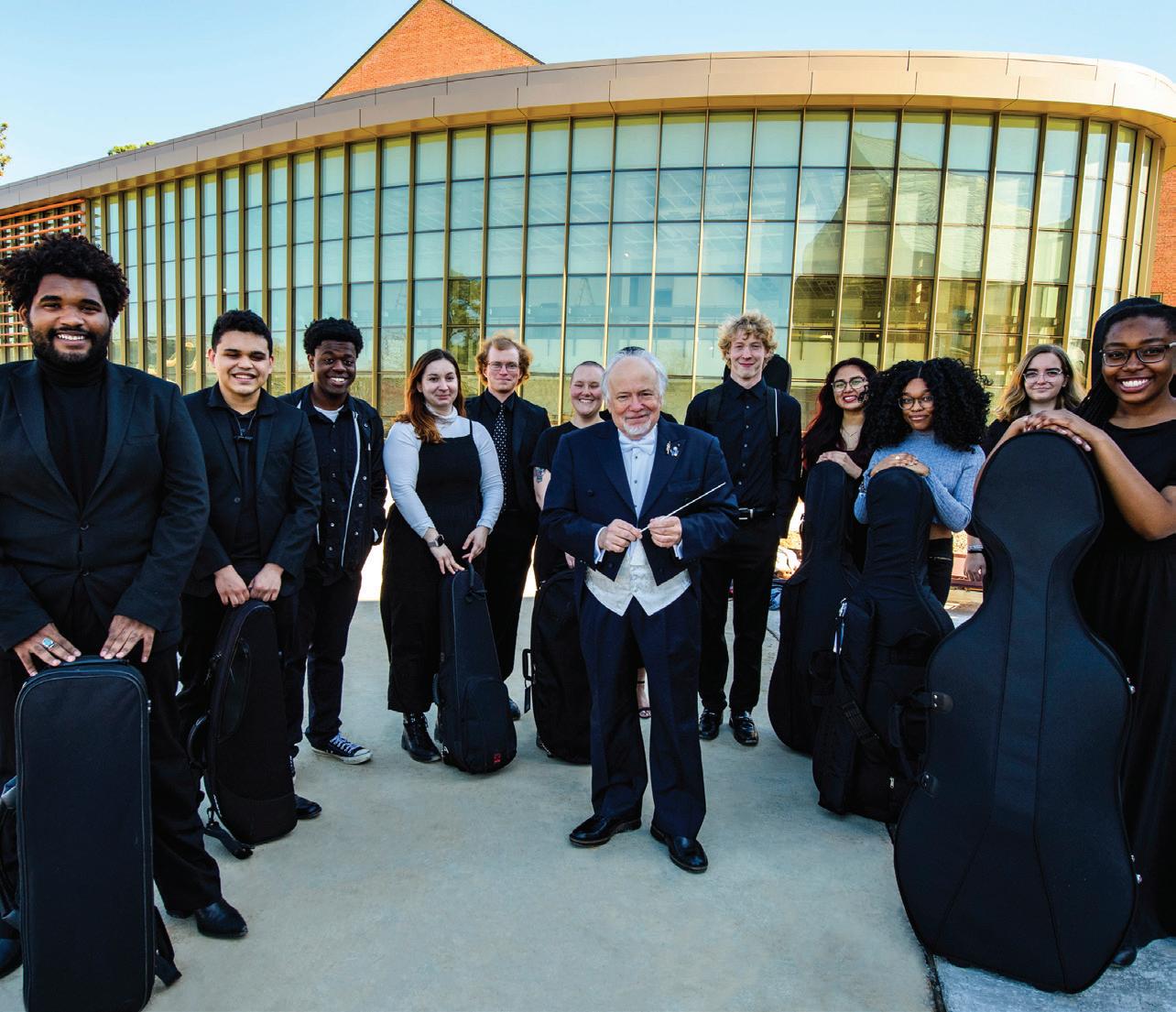
• Pillar II: Empower all students for success.
• Pillar III: Build a sustainable, vibrant and diverse student body that exemplifies an inclusive institution.
• Pillar IV: Become a sought-after regional resource and develop opportunities for student educational engagement with communities that are mutually beneficial. These pillars sit atop a foundation built by the Board, faculty, staff, students and College leadership, whose planning and consultations arrived at consistent themes for moving the College forward to realize its aspirations.
No one pillar can stand alone. Together these will ultimately result in a structure to equip SMCM to achieve a distinctive academic identity; empower student success; expand the enrollment base; engage with its communities; and embrace talent across the institution.
The core of SMCM’s strategy to create an innovative, distinctive and competitive academic identity is the LEAD Initiative (Learning through Experiential and Applied Discovery), launched by the College in 2019. The LEAD journey provides an all-encompassing and integrative pathway to ensure success for all students and includes curricular and co-curricular opportunities for all students, faculty and staff.
Develop and implement innovative new programming that continues to make the curriculum more distinctive and attractive to prospective students, faculty and staff.
Potential Key Strategies
1. Identify three to five new academic programs (including potential interdisciplinary and certificate programs) that meet the criteria of relevance, attractiveness and long-term sustainability.
2. Fully implement LEAD and promote its visibility and impact nationally.
3. Showcase the talents of the College community nationally and internationally, as well as expose students, faculty and staff to extraordinary talent beyond the campus community.
KPIs
LEAD Programming
• Develop three to five new programs by fall 2024.
• Implement at least two new programs by fall 2026.
• Enhance LEAD implementation by fall 2024.
Visibility and Impact Promotion
• For the yearly time period of July 1 - June 30, increase the number of clicks to LEAD-related web pages from 31,608 (baseline) by 30% in FY24 and 10% after that.
• Increase the average time spent on LEAD-related web pages from 32 seconds (baseline average) by 10% in FY24 and 5% after that.
• Conduct surveys of student prospects from across the country and internationally to gauge awareness of the LEAD initiative.
Talent Showcase and Distinguished Visitor Initiatives
• Designate two individuals to oversee the national awards process who will identify students and help prepare the award applications by spring 2024.
PILLAR I: Create an innovative, distinctive and competitive academic identity that attracts and retains talented students, faculty and staff.
• Achieve national award nominations for at least three students and one faculty in AY 2024-2025.
• Appoint a one-year and a one-semester Distinguished Visiting Scholar/Artist annually beginning in AY 2024-2025.
• Solicit local entrepreneurs, community leaders and people from the community every year to present a real-world problem to groups of students, faculty and/or staff who will, in turn, work to solve the challenge within the requested time period.
• Every semester present one distinguished lecture on campus. Incentivize students to attend the lecture and assess its impact on their worldview or understanding of the topic presented.
the College community’s national and global awareness and engagement impact.
1. Design and implement “Globalization-at-Home” experiences that are accessible to all students.
2. Provide students with new international experiences that appeal to a more diverse array of cultural interests and extend to more countries on continents beyond Europe and North America.
3. Increase global partnership programs in diverse locations to include opportunities for students, faculty and staff, with special emphasis on participation by staff.
KPIs
Globalization at Home
• Launch pilot trip in spring 2024.
• Offer two (2) trips in AY 2024-2025 and beyond.
• Present one distinguished lecture per semester related to international affairs beginning in spring 2024.
International Experience Initiatives
• Establish a passport initiative to encourage all incoming students to apply for a passport and provide funding support to first-year, Pell-eligible students for passport application fees beginning in AY 20242025.
• Increase grant support 200% by FY27 to provide full and partial scholarships for low-income students to participate in international experiences.
• Increase student participation in a global experience from 30% in AY 2024-2025 to 40% in AY 20262027.
• Increase the staffing level to three in the Office of International Education when demand demonstrates need.
Global Partner Program Expansion
• Expand global partners beyond Europe and North America, by at least two new partners, by AY 20252026.
• Allot stipends, garnered from private funds, for two staff to participate annually in a study tour experience beginning in FY25.
Cultivate a curriculum and campus environment that promote physical, mental and social wellness.
Potential Key Strategies
1. Adopt a holistic approach to wellness to address the mental health needs of our campus community members.
2. Assess student, faculty and staff wellness (satisfaction) annually using, where possible, nationally normed instruments and implement responsive strategies.
KPIs
Wellness Initiatives
• Offer a minimum of one new elective wellness course by AY 2024-2025 and every year beyond that.
• Include a wellness component in 10% of courses by AY 2024-2025; sustain this 10% as the curriculum evolves.
• Identify and prepare spaces for well-being initiatives (such as meditation spaces) throughout the campus beginning AY 2024-2025, with potentially one signature spiritual life space dedicated to meditation or religious observance.
Wellness Assessment
• Conduct a nationally-normed student survey annually beginning in AY 2023 – 2024 and show significant improvement every year beyond that.
• Aim to be identified as one of the “Great Colleges to Work For” by AY 2026-2027.
• Show significant improvement on The Higher Education Research Institute (HERI) Faculty Survey by AY 2025-2026 (baseline set in AY 2023- 2024).
• Develop a wellness and well-being program (physical, mental and financial) that adjusts to the needs of St. Mary’s College students, faculty and staff by AY 2024-2025.
• Develop a marketing campaign, “Way of Living Well,” that promotes wellness and well-being by AY 2024 -2025.
Integrate leadership and professionalization through professional development for students, faculty and staff.
Potential Key Strategies
1. Enhance student engagement in leadership activities within and beyond the formal classroom.
2. Increase support for staff professional development, career ladder development and achievement recognition.
KPIs
Student Leadership Engagement
• Increase the number of student opportunities for leadership development by 5-10% per year, with the baseline determined in AY 2023-2024.
Professional Development
• Develop and implement a Professional Training and Development Program by fall 2024.
• Require a minimum of 10% of staff to complete an authorized and supported professional development opportunity each academic year, beginning in AY 2024-2025.
Student success requires institutional support that is personalized, flexible, equitable and inclusive. Empowering our diverse student population requires individualized measures of success that may include academic achievement; personal agency and self-reliance; preparation for the future; growing and thriving; and maintaining physical, mental, social and financial health.
Ensure student access to a centralized, equitable and effective holistic support system.
Potential Key Strategies
1. Provide all new students (first year and transfer) with an individualized and integrated support team.
2. Implement an equitable, student-oriented advising system.
3. Conduct a feasibility study for the development of a Student Success Center, a one-stop shop for all student support services. While the study is being designed and run, launch a virtual center that connects select student support offices.
4. Create an improved early identification/alert system and form an enhanced early intervention team to address retention issues in real-time.
KPIs
Student Support Initiative
• Initiate the individualized and integrated support team for every student by AY 2024-2025.
Student-Oriented Advising System
• Implement advising for all undeclared majors by full-time professional advisers by fall 2025; major advising will continue to be done by faculty.
• Purchase and implement an interactive computer degree audit system by fall 2024.
• Increase student retention rates across all departments beginning in AY 2025-2026.
Student Success Center
• Launch virtual Student Success Center in spring 2024.
• Design a feasibility study by FY24; complete by FY25.
Early Identification, Alert, and Intervention System
• Design a data and reporting system in fall 2023, with piloting in spring 2024 and full implementation in AY 2024-2025.
• By the fall 2025 cohort, achieve 88% retention for first- to second-year, with no significant variation for underrepresented minority students, Pell students and first-generation students.
Foster a sense of belonging for all new students.
Potential Key Strategies
1. Expand the Seahawk Experience orientation program to a year-long program emphasizing all aspects of “belonging.”
2. Create a remote onboarding program, initiated at the time of admission, that orients the students to college life; prepares them for academic expectations; and introduces them to students, faculty and staff of similar interests/backgrounds.
3. Enhance and rebrand the campus life experiences for residential and commuter students (in partnership with staff).
4. Generate a campus transportation system to provide access to regional communities, organizations and activities.
KPIs
Seahawk Experience Orientation Program
• Expand Seahawk Experience to a year-long program in fall 2024.
• Increase student satisfaction of the year-long Seahawk Experience program to register a 4.5 score or above on a 5.0 scale beginning in spring 2025.
• Increase first- to second-year retention by 2% per year beginning in fall 2024.
Remote On-Boarding Program
• Develop program in summer 2023; implemented in spring 2024.
• Increase first- to second-year retention by 2% per year beginning in fall 2024.
Campus Life Rebranding
• Enhance and/or renovate community spaces within residence halls and campus buildings beginning in fall 2024.
• Enhance and rebrand the commuter lounge in spring 2024.
• Develop commuter student activities that better integrate the students into campus activities or facilitate their ability to interact with each other beginning in fall 2024.
• Develop and initiate a plan by fall 2025 to improve traditional residence hall facilities.
Campus Transportation System
• Purchase shuttle bus by fall 2024.
Provide a “Graduate Return on Investment” grant to empower (and incentivize) new, first-time students to engage in activities that facilitate graduating within four years of matriculation.
Potential Key Strategies
1. Guarantee every student an alumni mentor.
2. Require students to participate in two Honors College Promise (HCP) associated activities during their four-year tenure at the College.
3. Require all students to meet with their academic adviser at least once a semester with an emphasis on the student’s schedule facilitating graduation within four years.
Alumni Mentor Expansion
• Provide every student with access to an engaged alumni mentor by fall 2026.

• Verify every participant has engaged in two HCP associated activities by the end of their fouryear tenure.
• Increase the four-year graduation rate for each new student cohort beginning with the graduating Class of 2027.
Increase Academic Adviser & Student Interaction
• Ensure that every student has met with their academic adviser each semester by fall 2026
As SMCM grows, its student population should reflect that of the state of Maryland. Significantly, the success of this Pillar relies on the successful implementation of Pillars I, II and IV to distinguish the College as The National Public Honors College, thereby becoming the college of choice for prospective students and families.
Employ strategies to have a student body that reflects Maryland’s diverse and multi-ethnic population.
1. Expand and strengthen relationships with high school counselors and pre-college educators.
2. Add a diversity recruitment specialist fluent in Spanish and ensure that select recruitment materials are available in Spanish.
3. Provide and promote innovative financial support mechanisms for new students that are attractive to first-generation and students of low- to middle-income levels.
KPIs
High School and Pre-College counselor and educator outreach
• Host three “must-go-to” programs (one each semester and one in the summer with a residential component) in AY 2023-2024 and annually after that.
• Increase new student enrollment from 480 to 530 by 2025 with underrepresented minority students increasing by 2% each year; first-generation students maintained at no less than 25% of the total entering class and Pell grant-eligible students at no less than 20% of the entering class.
Increase Diversity Recruitment Resources
• Hire a specialist (fluent in Spanish) in AY 2023-2024.
• Increase new student enrollment from 480 to 530 by fall 2025 with underrepresented minority students increasing by 2% each year; main first-generation students at no less than 25% of total entering class and Pell grant-eligible students at no less than 20% of entering class.
• Provide travel and/or transitional grants, separate and distinct from the financial aid package, to at least 50% of the eligible new first-generation students and students from low- to middle-income families by AY 2024-2025; subsequent years provide grants to all eligible students.
• Increase enrollment of targeted groups by 2% / year beginning in AY 2025- 2026.
PILLAR III: Build a sustainable, vibrant and diverse student body that exemplifies an inclusive institution.
As The National Public Honors College, increase the number of out-of-state students.

Potential Key Strategies
1. Invest in the geographic diversity of students by targeted out-of-state recruitment.
2. Identify new target international markets.
KPIs
Targeted Out-of-State Recruitment
• Increase out-of-state domestic students from 13% to 20% of entering class by AY 2026-2027.
• Increase yield for out-of-state students from 13% to 17% (current in-state yield) by AY 2026-2027.
New Target International Market Identification
• Increase the percentage of international students in the entering class from 1% to 2% by AY 20262027.
As The National Public Honors College, St. Mary’s College of Maryland desires to be an anchor institution locally and in the region, raising its visibility, presence and impact. It seeks to be a partner of choice, cultivating long-lasting and impactful relationships that contribute to the best and most equitable place to live, work and study. This community-focused pillar immerses our students in pathways for success, meaning, service and collaboration while developing opportunities for student educational engagement with the local and regional communities.
Enrich regional life by assessing and advertising College resources available to the local and regional communities.
1. Create an office of Campus Outreach and Community Engagement and a Campus Outreach and Community Engagement Council that jointly conduct a needs assessment and identify opportunities and potential partnerships.
2. Develop marketing strategies once the program is established.
KPIs
Launch Office of Campus Outreach and Community Engagement with Adjoining Council
• Establish and staff office by AY 2023-2024.
• Form Council by AY 2023-2024.
• Complete needs and opportunities assessments by AY 2023-2024.
• Deploy marketing by AY2023-2024 touting current community and outreach opportunities, especially aimed at increasing the regional population presence on campus.
• Continue marketing for new opportunities throughout AY 2024-2025 and beyond.
Expand opportunities for students to be engaged within the region through curricular and co-curricular offerings that advance the St. Mary’s Way.
PILLAR IV: Become a sought-after regional resource and develop opportunities for student educational engagement with communities that are mutually beneficial.
1. Define “community-based learning” while incentivizing faculty to develop courses (or units of courses) that meet the definition and establish the community partnerships required for such courses.
2. Enroll new students with prior school, community, athletic, or work leadership and/or service experience (including military service) and challenge them to participate, document and publicize clubs, teams and classes engaged in these activities.
3. Develop and pilot an intergenerational community model in which individuals from within and beyond the campus work to enhance the vitality and sustainability of all partners by identifying solutions to issues within the broader community.
KPIs
Community-Based Learning Courses
• Designate 2-5% of courses as community-based learning by AY 2025-2026.
Attract and Increase New Student Involvement in Leadership Activities
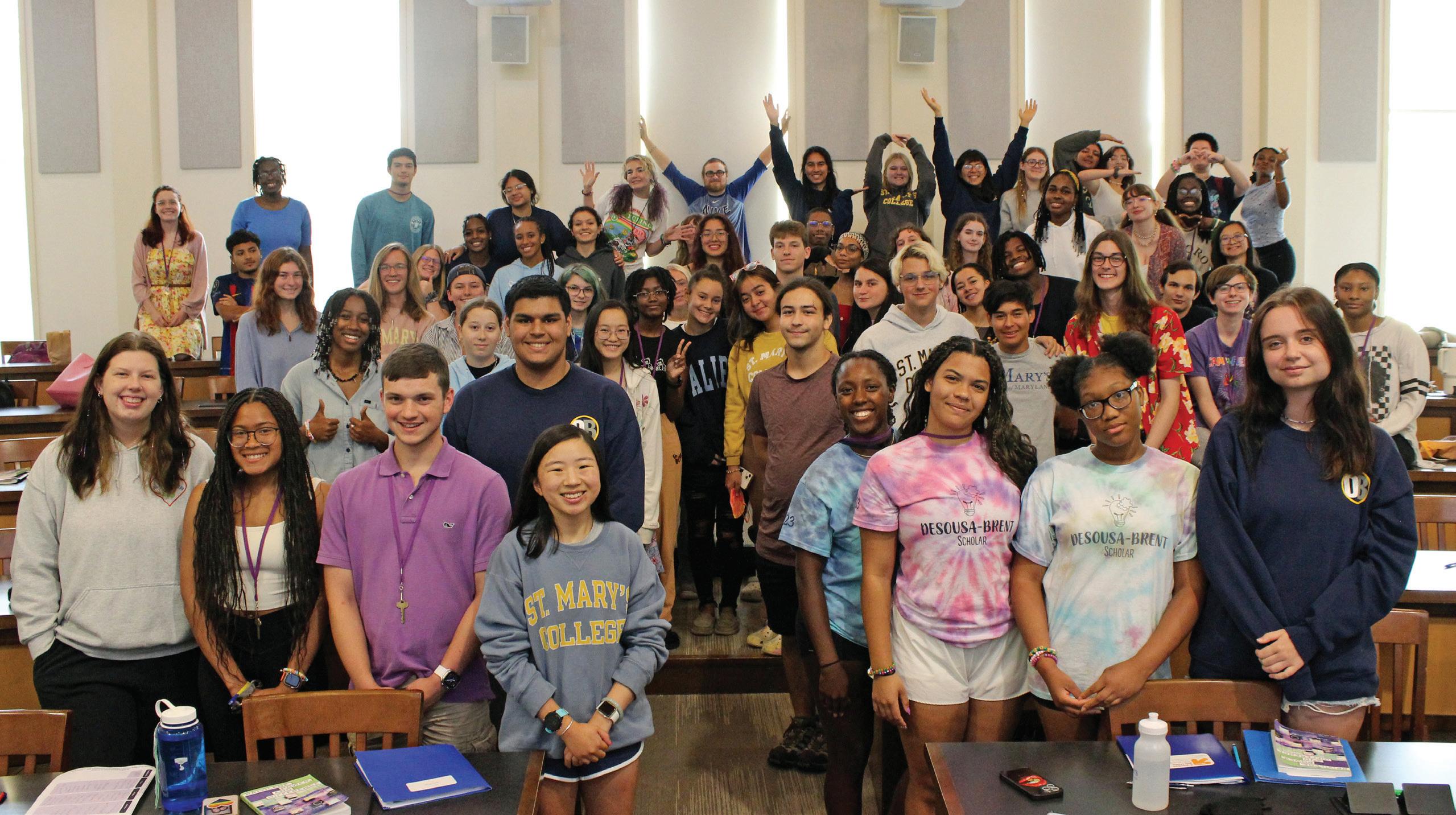
• Identify all service projects our students participate in across the region and publicize findings by spring 2024.
• Increase the number of service project opportunities by 10% by fall 2026 and by a minimum of 5% annually thereafter.
• Apply for Carnegie designation as a “Community Engaged” College by the 2026 application cycle.
Develop Pilot Intergenerational Community Model
• Develop the model in spring through fall of 2024; pilot and assess in AY 2024-2025.
• Implement at least one initiative using the model in fall of 2025 and at least two per year thereafter.
With the successful completion of the two previous strategic plans between 2016 and 2022, the College saw the need for a new strategic plan in the summer of 2022. Building on the success of “A Time for Rebirth” (2016-2019), a foundational plan, and “Big Audacious Goals” (2020-2022), a task force-centric transitional plan, the new strategic plan would be transformational. It would also combine the traditional approach used in the first strategic plan with the focused approach used in the second plan to be able to be developed quickly while engaging the entire stakeholder community through the process.
Within a framework established in consultation with the Board of Trustees in August of 2022 during its board retreat, the President and Executive Council finalized the selection of four pillars around which the strategic plan would be built. These pillars were adopted by the Board at its September 2022 meeting.
The Strategic Plan Steering Committee (SPSC) oversaw the plan development, which coordinated four Workgroups (one for each pillar). With guidance from an outside facilitator, the Workgroups conducted background research, engaged with colleagues and stakeholders and drafted and refined goals over the fall and winter of 2022-2023.
The College held five town hall-style sessions to solicit input on the strategic plan in January 2023. On-campus sessions for the campus community were held on January 11, 12 and 19. A fourth on-campus session was held as part of the Student Government Association meeting on January 17 to encourage additional student input. A session for the community on Pillar IV was held on January 19 at the Lexington Park library. Finally, a mechanism was provided through the Strategic Plan website at different stages of the plan development process to allow for continued feedback from the campus community.
After final refinement by the SPSC, the strategic plan was written in April 2023. President Jordan presented the plan to the Board of Trustees at its May 2023 meeting, at which time it was adopted.
In June 2023 the President announced the formation of the Strategic Plan Implementation Team (SPITFire), a 10-member committee drawn from across the campus, including staff, faculty and a student member. Charged with overseeing the implementation of the strategic plan, SPITFire began work to identify points of contact and budget managers for each strategic plan initiative, establish a timeline and clarify key performance indicators (KPIs). During fall 2023, SPITFire members will coordinate with key stakeholders within each pillar to begin plan implementation.
Co-chairs
• Jeff Byrd, executive staff
• Argelia Gonzalez Hurtado, faculty
Members:
• José Ballesteros, faculty
• Bhargavi Bandi, staff
• Carolyn Curry, executive staff
• Angie Draheim, staff
• Emily Rudo, student
WORKGROUP A:
Pillar I: Create an innovative, distinctive and competitive academic identity that attracts and retains talented students, faculty and staff.
Co-chairs
• Jeff Coleman, faculty
• Katie Gantz, executive staff
Members:
• Silvio Borrero, faculty
• Emily Brownlee, faculty
• Jennifer Falkowski, staff
• Kelly Hernandez, staff
• Gretchen Phillips, staff
• Michelle Milne, faculty
• Connor Riggs, student
WORKGROUP B:
Pillar II: Empower all students for success.
Co-chairs:
• Jerri Howland, executive staff
• Brayan Ruiz-Lopez, student
Members:
• Deborah Bello, staff
• Hudson Christensen, student
• Joanne Goldwater, staff
• Aurora Margarita-Goldkamp, staff
• Maria Ximena Postigo-Guzman, faculty
• Samantha Elliott, faculty
• Geoffrey Lewis, staff
• Crystal Oliver, faculty
WORKGROUP C:
Pillar III: Build enrollment through a sustainable, vibrant and diverse student body that exemplifies an inclusive institution.
Co-chairs:
• Nairem Moran, staff
• David Hautanen, executive staff
Members:
• Karen Anderson, faculty
• Casey Brandt, staff
• Michelle Carter, staff
• Daniel Chase, faculty
• Anthony Guzman, staff
• Jayden Washington, student
• Isabella Woel-Popovich, student
Pillar IV: Become a sought-after regional resource and develop opportunities for student educational engagement with communities that are mutually beneficial.
Co-chairs:
• Beth Byrd, community member
• Dereck Rovaris, executive staff
Members:
• Kelsey Bush, staff
• Lydia Clark, student
• Cindy Dale, staff
• Jerry Gabriel, faculty
• Mary Johnston, staff
• Kathy Koch, faculty
• Barry Muchnick, faculty
• Leslie Taylor, community member
• Janice Walthour, community member
SPITFire is charged with overseeing the implementation of the strategic plan.
Co-chairs:
• Anne Marie Brady, staff
• Jeff Byrd, executive staff
Members:
• Ugonna Ejekwu, student
• Matt Fehrs, faculty
• Cindy Greb, staff
• Randy Larsen, faculty
• Rob Maddox, staff
• Carrie Patterson, faculty
• Chuck Steenburgh, staff
• Derek Young, staff

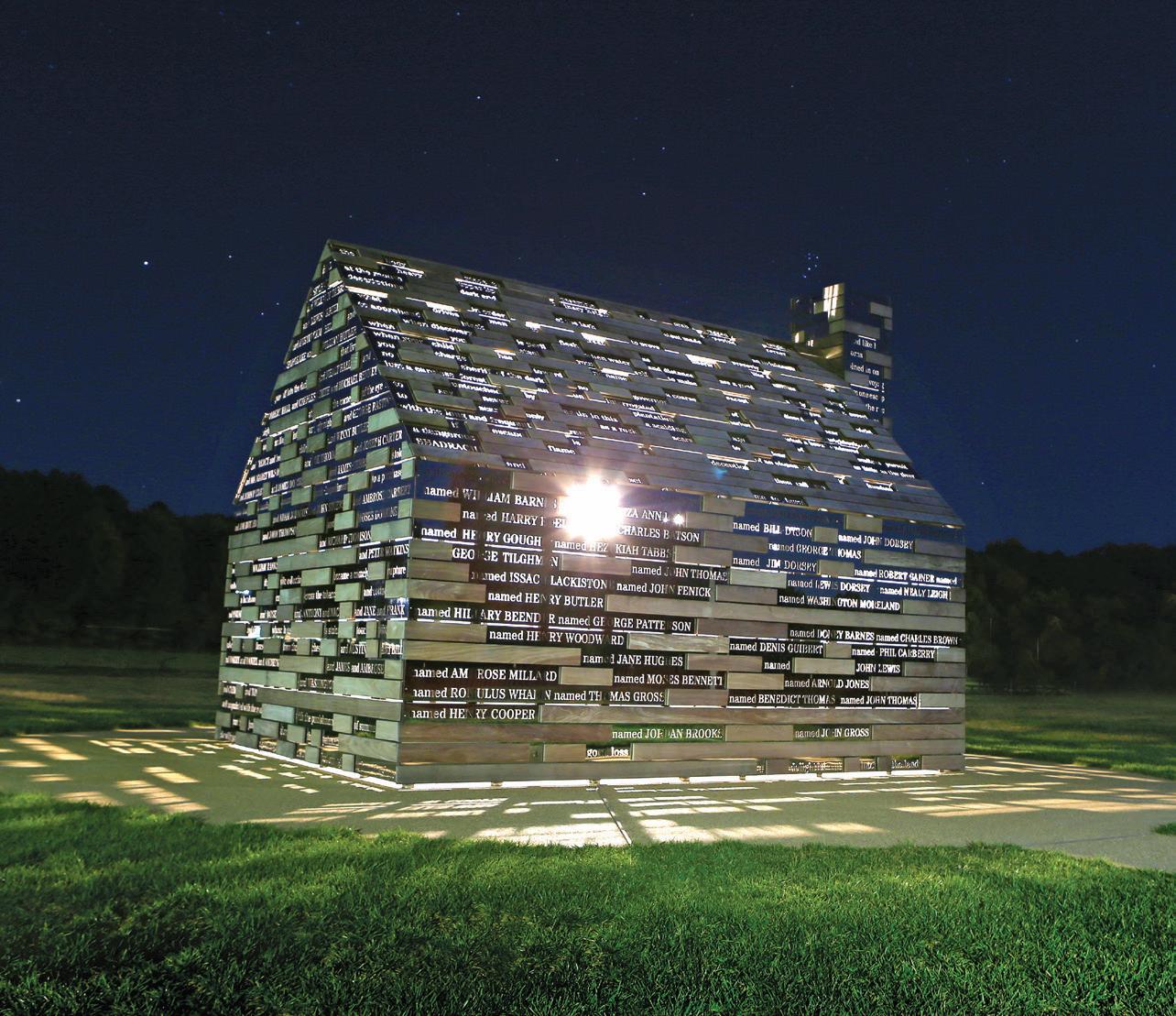


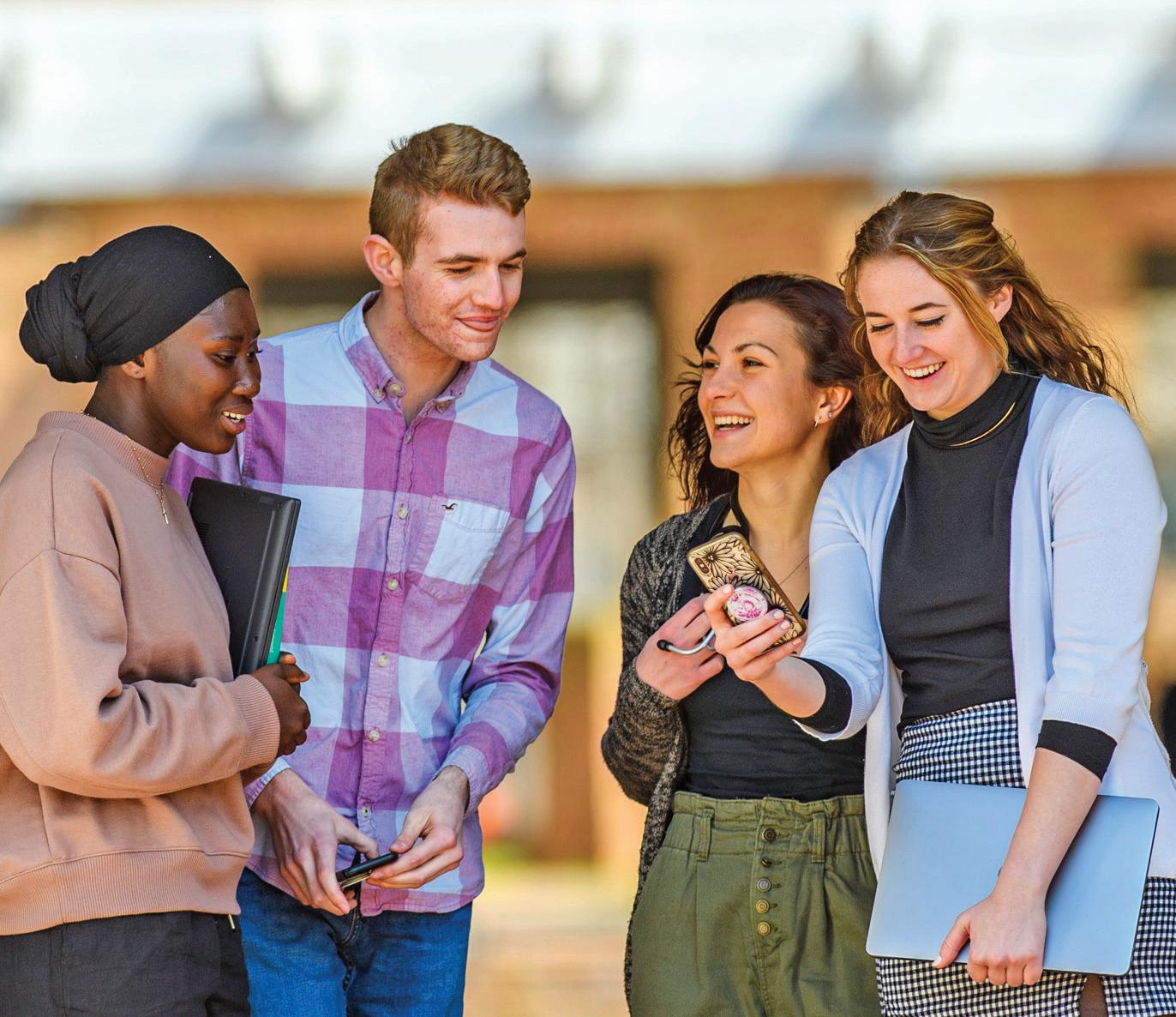
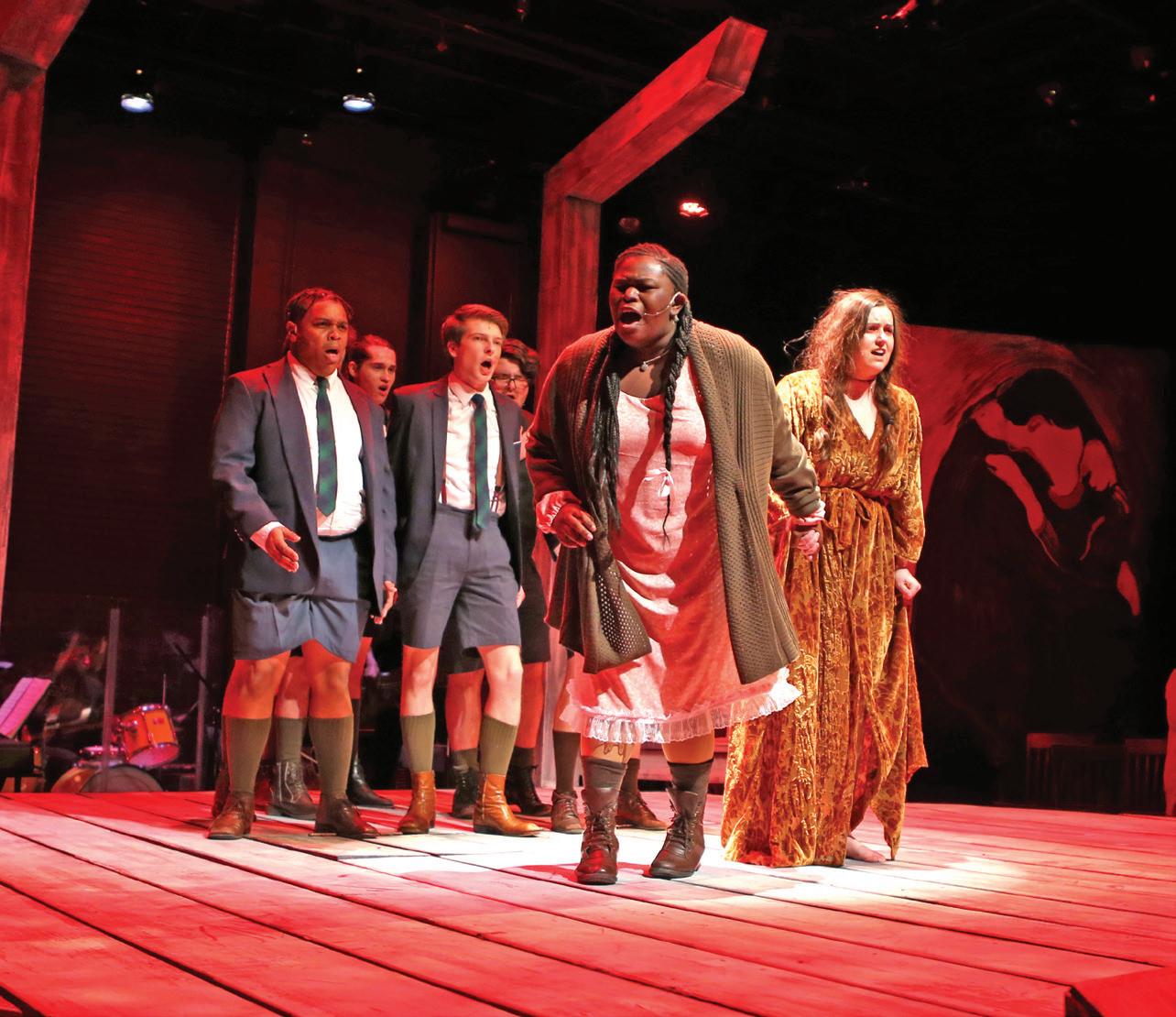
5th RANKED national public liberal arts college (U.S. News & World Report, 2024)
#5 Colleges with Best Professors in Maryland (Niche, 2024)
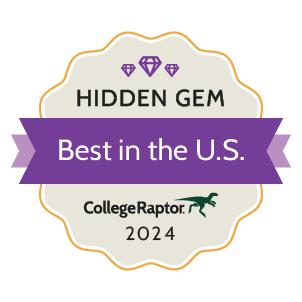
Public College of Distinction (2023-2024)

Affordable College of Distinction (2023-2024)
A Phi Beta Kappa Institution since 1997
www.smcm.edu/president/strategic-plan
"The Rising Tide" strategic plan is a living document and subject to change during the implementation phase.